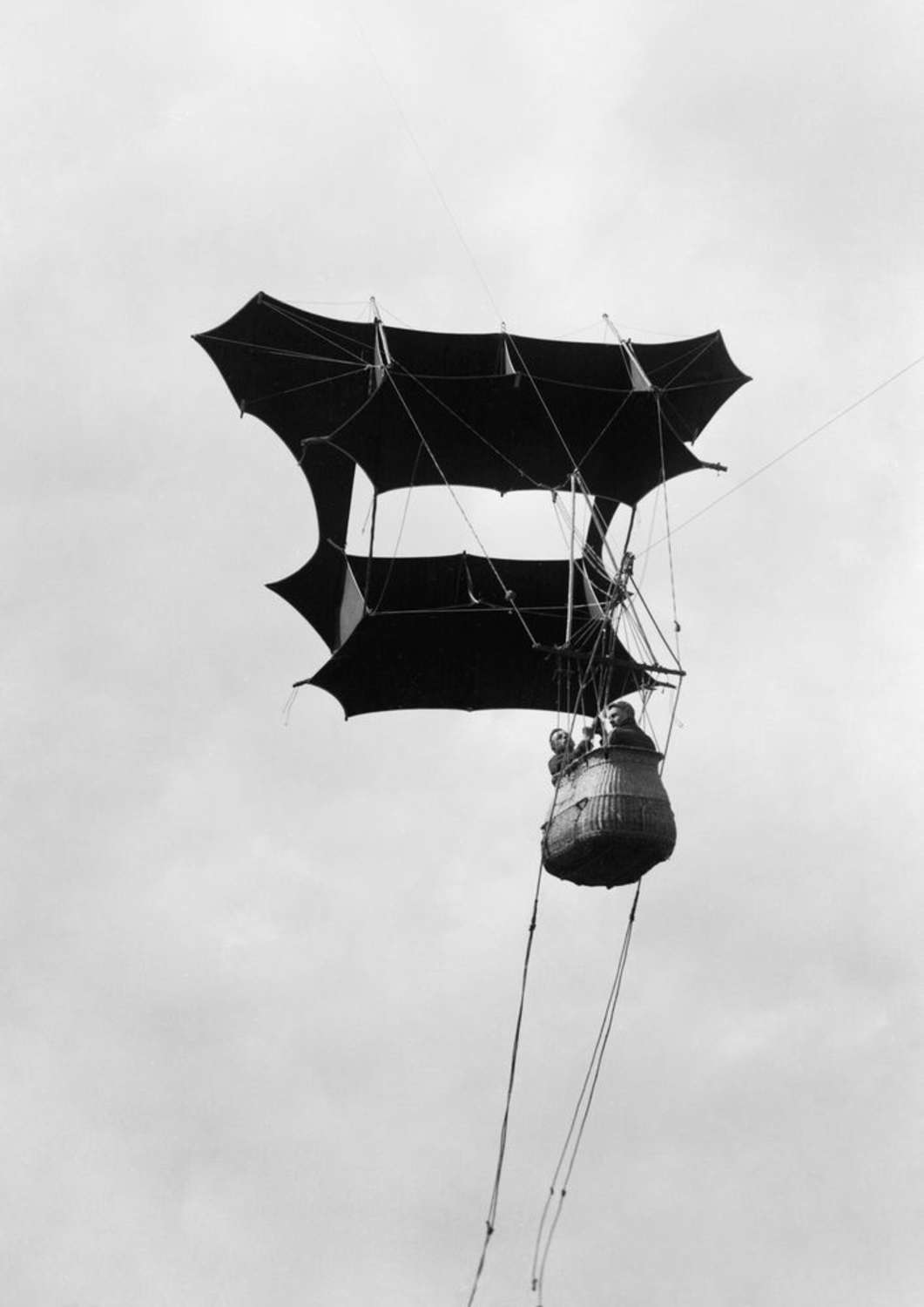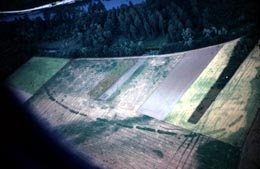The first good photo by Roger Agache, taken in April 1960, at Bacouël (Oise).
From 1952 to 1962, the pioneer generation published photographs that demonstrated the interest that aerial prospecting held for archaeology. This group included Bernard Edeine, Pierre Parruzot, René Dielh, Roger Chevallier, Bernard Chertier, Robert Ertlé, Daniel Jalmain, René Goguey and Roger Agache. Roger Agache prospected tirelessly, and proved that winter prospecting on bare ground was more efficient than springtime prospecting (which relies on anomalies in crop growth), which was the opposite of what had been universally believed since the release of O.G.S. Crawford's fine book in 1929.
Most of these specialists, the "flying fools", as they were amusingly termed, exchanged ideas and met regularly at the historical topography and photographic interpretation seminars given by Professor Raymond Chevallier at Paris's École Pratique des Hautes Etudes.
Christian Goudineau has spoken of "the incredible contribution made by these flying fools who flew their patched-together aircraft with one hand while holding a cheap camera with the other."
Their "first communion" photographic equipment and their "air-club scooters" amused the military, who had enormous technical means at their disposal. Like most specialists, they swore by high-altitude aerial coverage. A number of university professors were also incredulous, because the results seemed too beautiful to be true.
Quadrangular enclosure from the late Gallic period at Condé-sur-Aisne (Aisne). Photo: Roger Chevallier, 1957.
Neolithic enclosure at Noyen-sur-Seine (Seine et Marne). Photo: D. Jalmain, 1960.
Nevertheless, the International Aerial Archaeology Conference, held in Paris in 1963 by Professor Chevallier, marked a turning point in France and also abroad. This made people aware of the interest of the results that had been obtained with two-bit means.



